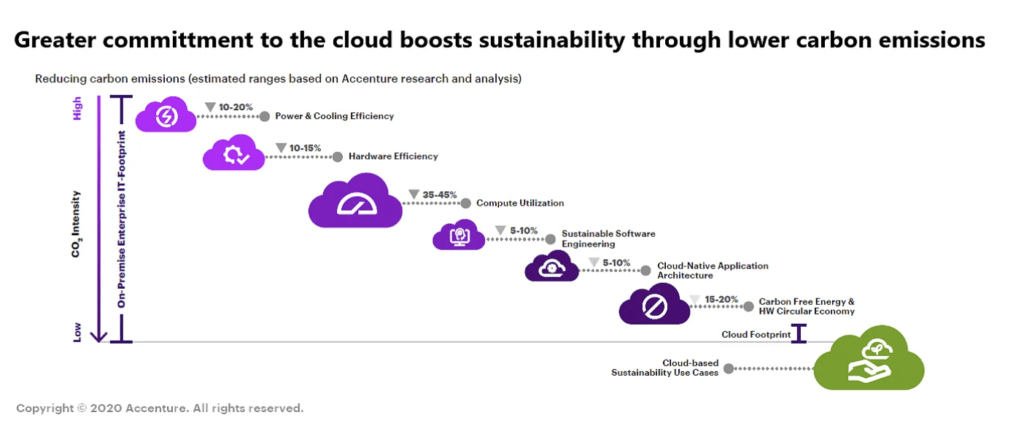Jean-Francois Gasc: Digital technology is one of the most potent forces available to insurers in their quest to create a sustainable future. Close to 75 percent of CEOs across all industries are investing in digital solutions to address the challenges of sustainability.
This huge commitment to digital technology was revealed in our research with the United Nations Global Compact. Around 65 percent of CEOs view the fourth industrial revolution (4IR) technologies as critical for addressing sustainability challenges such as socio-economic disparities. 4IR technologies include digital advances such as artificial intelligence (AI), robotics, and quantum computing.
Carriers should use their digital resources to identify and implement initiatives that can counter threats such as climate change, environmental pollution, and social injustice. At the same time, however, they ought to improve the management of these resources. Smart resource management can help increase digital businesses such as insurers reduce carbon emissions, conserve energy, and curb waste.
Carriers looking to transform themselves into sustainable insurers need to embrace the twin potential of digital technologies.
Smart sustainability initiatives deliver impressive results.
Insurers can apply their digital resources to advance their own sustainability initiatives. They can use data analytics and geo-mapping, for example, to help customers manage environment risks. Alternatively, they can fund sustainability initiatives that rely on digital technologies. Opportunities for insurers to fund such projects are myriad. I think the initiatives listed below are particularly innovative.
Banyan Nation in India is using mobile communications technology and cloud platforms to encourage the recycling of plastic. It links thousands of waste collectors with plastics recyclers to produce packaging material.
UK firm Winnow is employing AI and analytics technologies to help chefs in commercial kitchens cut waste. The company’s intelligent solution reduces food costs by up to 8 percent a year. It claims to have helped divert food worth $US42 million away from landfills and saved more than 60,000 tons of carbon emissions.
AMP Robotics in the US has developed an intelligent robotics system that uses AI to identify and extract recyclable materials from waste tips and construction sites. The company’s AI platform, which guides its robotics devices, can recognize colors, textures, shapes, sizes, patterns, and product labels to determine whether items can be recycled. AMP claims its systems have recovered a billion recyclable items from waste material.
Cloud computing enhances sustainability.
Insurers looking to better manage digital technology resources to help them reach their sustainability goals should consider migrating more of their workloads into the cloud. In my recent blog series, “Accelerating into the cloud”, I discussed some of the benefits insurers enjoy when they shift critical applications into the cloud. Improved sustainability is one of the advantages that is often overlooked.
I’ve been impressed by the extent to which cloud computing can enhance sustainability. Our research shows that organizations that migrate to the cloud can reduce their energy consumption by 65 percent and curtail carbon emissions by nearly 85 percent. Such sustainability benefits come with significant financial gains. Migrations to the cloud can deliver total-cost-of-ownership (TCO) savings of as much as 40 percent.
The more a company is committed to cloud computing, the more it improves its sustainability. The illustration below shows the gains insurers can achieve by increasing their use of cloud offerings. By moving from a conventional enterprise environment to an infrastructure-as-a-service platform, for example, they could reduce their carbon emissions by as much as 84 percent. If they increased their commitment, and designed their applications specifically for the cloud, they could curb carbon emissions by as much as 98 percent.

Greater use of cloud computing helps sustainability in another way. Most of the big providers of cloud computing services have set aggressive sustainability targets. The more their cloud businesses grow, the bigger their contribution towards sustainability.
- Microsoft has set its sights on becoming carbon negative within 10 years. It is already carbon neutral. By 2050, it hopes to have removed the equivalent of all the carbon it has emitted since it was founded in 1975. Users of its Azure cloud platform can track the carbon emissions associated with their own workload.
- Google plans to ensure that its data centers don’t contribute to carbon emissions by 2030. Early this year, Google achieved a zero net carbon footprint. By buying high-quality carbon offsets it has nullified all the carbon it has generated since its founding in 1998.
- Amazon Web Services (AWS) is using advanced energy management systems at its data centers to enhance the sustainability of its cloud infrastructure. It claims its cloud operations are over three times more energy-efficient than the median US enterprise data center.
Source: Accenture
Share this article:
Share on facebook
Share on twitter
Share on linkedin









